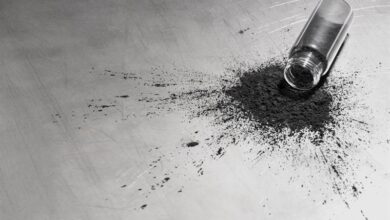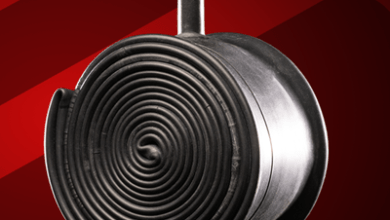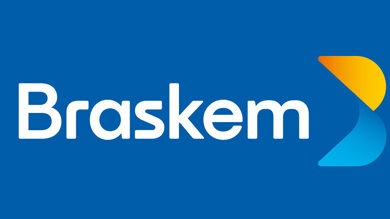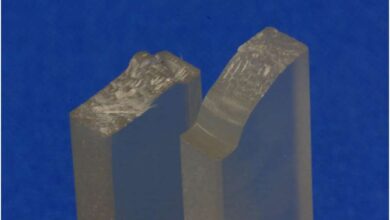A strong partner for facing future challenges
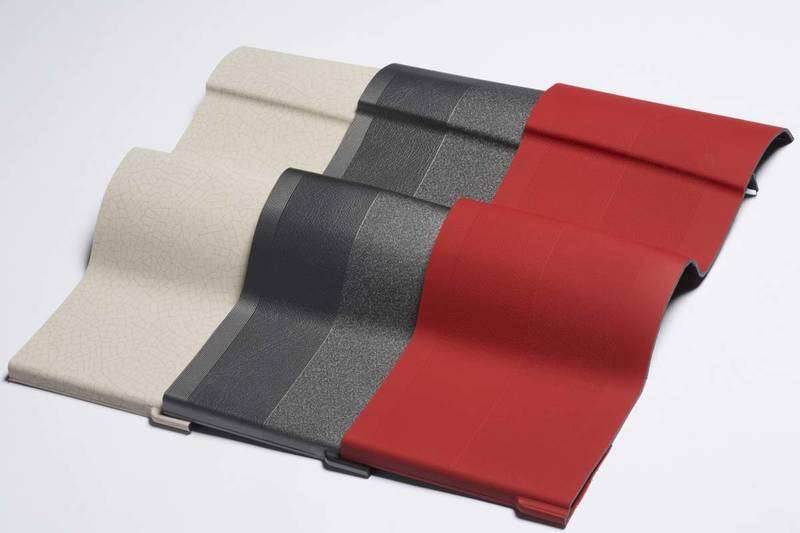
At K 2016 in Dusseldorf from October 19 to 26, ENGEL will once more underscore is global claim to technological leadership. The injection moulding machine manufacturer and system expert headquartered in Schwertberg, Austria, will showcase its challenging applications targeted for the automotive, teletronics, technical moulding, packaging and medical industries. These sophisticated applications generate high customer benefits thanks to their innovative process technologies, custom-built manufacturing concepts and intelligent control technology. ENGEL gives its customers the decisive edge in international markets with even greater cost efficiency, productivity and quality consistency. Be the first – that is the motto of the ENGEL exhibit at K 2016 in hall 15, stands C58.
Automotive: two premieres for even lower costs per unit
DecoJect brings colour, structure and haptics into play
IMD technologies are increasingly replacing painting in the production of car interiors in order to combine a high quality surface finish with a high degree of flexibility for small batch sizes and low unit costs. With the DecoJect film-based solution, ENGEL together with its partners present the next development step at K 2016: the combination of injection moulding with IMG (in-mould graining) in a roll-to-roll process. Unlike conventional IMD processes, the paint is not simply transferred from the film onto the component. Instead, the film is punched out and stays on the component. This way, in addition to colour and pattern, surface structure and haptics also come into play.
At its exhibition stand, ENGEL will present the DecoJect technology in a fully automated production cell for the first time. On an ENGEL duo 5160/1000 injection moulding machine sample parts simulating large door panels are produced. In order to demonstrate the new technology's broad spectrum of capabilities, the parts exhibit different structures, including a sophisticated leather grain.
As soon as the mould opens and the robot has removed the finished part, the DecoJect thin film is drawn in, heated by the IR radiator located in the gripper and preformed directly in the mould with the aid of a vacuum system. The film is then immediately back-moulded and punched out before the robot removes the component and transfers it to the integrated laser station for fine trimming. A ready-to-fit component leaves the production cell every 60 seconds. A design change only requires a few minutes to replace the roll. Batch size therefore no longer has a noticeable impact on unit costs.
The DecoJect thin film is a product fo Benecke-Kaliko based in Hannover, Germany, which belongs to Continental technology group. Since the desired surface characteristics like colour, texture, robustness and haptics can be achieved via the film, DecoJect permits the use of polypropylene as an inexpensive, undyed standard material. An additional efficiency factor is the integration of MuCell technology from Trexel (Wilmington, MA, USA). Foam injection moulding significantly reduces both the component weight and the use of raw material and energy and yet still delivers dimensionally stable parts with low warpage.
Only the very close, interdisciplinary cooperation of many partner companies has paved the way for DecoJect. Besides ENGEL and Benecke-Kaliko, the project also involves the following companies: Georg Kaufmann Formenbau in Busslingen, Switzerland, the Galvanoform Gesellschaft für Galvanoplastik in Lahr in southern Germany, hot runner manufacturer HRSflow, headquartered in San Polo di Piave, Italy, ICO SYSTEM international in Lüneburg, Germany, and Borealis headquartered in Vienna, Austria, which not only supplies the raw material, but is also responsible for the mould flow analyses. The challenges faced in developing the new technology included, among other things, constructing an IMG mould that can withstand the high pressures involved in the injection moulding process, as well as perfecting the very fine controllability of the electric valve gate drives.
ENGEL made a significant contribution to the high cost efficiency and flexibility of the process with its automation expertise. An ENGEL viper linear robot and an ENGEL easix six-axis robot take care of parts handling. Together with the laser station for the fine trimming of the film, the ENGEL easix is integrated in an extremely compact space in an ENGEL easiCell. Thanks to its standardised but modular design, the ENGEL easiCell makes it easy to integrate robots and processing units upstream and downstream of the injection moulding step. Among other things, it can be used as a production module for laser processing (cutting and marking), for applying polyurethane seals, for surface treatment such as with plasma, as well as for other automation tasks like tray or box transfers.
Besides its space-saving design, ENGEL easiCell offers the user additional advantages. For example, all the control systems relevant to the overall process are integrated into a single CC300 control unit. As a stand-alone version, the ENGEL easiCell is equipped with its own 21″ Full-HD control panel. Alternatively, the cell can be operated and monitored via the panel of an injection moulding machine. The integration of all control system components guarantees a consistent operating philosophy and reduces the training required for its operating personnel. Consistency is also evident in the fact that all of the legal requirements applicable for the individual components have been taken into account. The entire production cell is delivered with a CE certificate. At K 2016, ENGEL is presenting the ENGEL easiCell automation cell developed by ENGEL Automatisierungstechnik in Hagen, Germany, for the very first time.
[EasyDNNGallery|2316|Width|400|Height|400|position||resizecrop|False|lightbox|False|title|False|description|False|redirection|False|LinkText||]
Even large car interior components can be produced cost-efficiently with DecoJect. The desired surface characteristics like colour, texture, robustness and haptics can be achieved via the film
[EasyDNNGallery|2349|Width|400|Height|400|position||resizecrop|False|lightbox|False|title|False|description|False|redirection|False|LinkText||]
In order to showcase the broad spectrum achievable with the technology, the sample parts produced on an ENGEL duo injection moulding machine at K 2016 exhibit a variety of different structures.
[EasyDNNGallery|2317|Width|400|Height|400|position||resizecrop|False|lightbox|False|title|False|description|False|redirection|False|LinkText||]
The new ENGEL easiCell integrates robots and processing units upstream and downstream of the injection moulding step within a compact space. (Picture: ENGEL)
Lightweight design: further milestones – not just for the automotive sector
With its Center for Lightweight Composite Technologies in St. Valentin, Austria, ENGEL is one of the most important development partners in the international automotive industry. Together with its partners, ENGEL is working to develop cost-effective processes for the high-volume production of parts that meet the present and future requirements of lightweight construction. The fact that this is no longer limited to automobile parts is clearly demonstrated by the two composite applications at ENGEL's stand at K 2016. Both set further milestones for even more lightweight, more robust and more sustainable composite products.
Teletronics: process integration with extreme thin-wall technology
Whether notebooks, tablets or smartphones, when it comes to producing handheld devices, the key to less weight and more stability lies in using innovative composite materials for the housing. The goal of a development cooperation project between ENGEL AUSTRIA, Bond-Laminates (Brilon, Germany) – a company of the LANXESS group headquartered in Cologne, Germany – and LEONHARD KURZ (Fürth, Germany) is to also significantly increase production efficiency. At K 2016, the three partner companies are introducing the revolutionary result of their collaboration: the injection moulding of an extremely robust, fit-for-purpose housing with a sophisticated surface decoration in extreme thin-wall technology. With a wall thickness of only 0.6 mm, the demonstration part offers completely new possibilities.
The highly automated production cell operating at ENGEL's exhibition stand was specially desigened for the material combination of continuous fibre reinforced thermoplastic preforms (Tepex®) and IMD films. For the In Mould Decoration of composite components in large scale serial production it integrates three processing technologies: ENGEL organomelt for shaping and functionalising thermoplastic continuous fibre reinforced semi-finished products (thermoplastic fabrics) in the injection moulding process, ENGEL variomelt for optimising the surface quality via variothermal mould temperature control and In Mould Decoration (IMD) for optical and functional surface finishing directly in the mould. The heart of the production cell is an ENGEL insert 500V/130 single injection moulding machine with a roll-to-roll IMD unit, an ENGEL easix six-axis robot, which takes over the entire handling of the semi-finished and finished parts, and an infrared oven which was also developed and built by ENGEL for preheating the thermoplastic fabrics.
What makes the new method special is that the continuous fibre reinforced thermoplastic preform is transformed, overmoulded und decorated in a single step. In order to achieve a direct material bond, Bond-Laminates and LEONHARD KURZ have further developed their materials as well as the mould and process technologies required for processing and thus paved the way for the high degree of process integration. Using traditional methods, composite components must be treated and painted in additional work steps after the injection moulding process to achieve a resistant high-quality surface finish. Several work steps are eliminated by the integrated fabrication, which not only reduces production time and manufacturing costs, but also the carbon footprint of the components. The integrated process requires less energy and significantly reduces the use of raw materials and processing chemicals.
Both the ENGEL easix multi-axis robot and the IR oven are fully integrated into the CC300 control unit of the injection moulding machine. Therefore the preheating of the semi-finished products can also be centrally controlled from the IMM display. Temperatures and heating times are stored together with the data of the injection moulding process, which simplifies documenting, evaluating and tracking the overall process.
At K 2016, ENGEL will be presenting the IR ovens for the first time as a complete series. Five sizes are available with a heating surface up to 1110 x 1610 mm, which makes it possible to process large semi-finished products such as for complete door modules or front ends for the automotive industry. The ENGEL IR ovens are characterised by their very high thermal homogeneity. In order to be able to also heat smaller semi-finished products efficiently, the individual radiators can be controlled separately.
The ENGEL insert vertical machine presents itself in Dusseldorf in an ergonomically optimised machine design. Among other things, the new design features improve the accessibility of the clamping unit and come into play when the process is not automated, but requires manual work instead. Furthermore, the modern design simplifies set-up.
The ENGEL insert injection moulding machines are available either with a vertical or horizontal injection unit. The vertical version of the IMM being shown at the trade fair impresses with its compact footprint. Since the electric control cabinet is also mounted vertically in this version, the IMM hardly takes up more space than required by the clamping unit. For a long time, the ENGEL insert V injection moulding machines were only available with clamping forces up to 160 tons, but the series has recently been expanded to include a 200 and a 250 ton model.
The ENGEL easix multi-axis robot that is part of the demonstration exhibit in Dusseldorf also contributes to the small footprint of the overall system. Even in the standard version of the ENGEL easix models based on technology from Kuka, prohibited areas can be specified to keep the area small that needs to be enclosed.
[EasyDNNGallery|2324|Width|400|Height|400|position||resizecrop|False|lightbox|False|title|False|description|False|redirection|False|LinkText||]
Extremely robust and extremely thin: the housings have a wall thickness of only 0.6 mm and come ready-to-fit direct from the injection moulding machine. (Picture: ENGEL)
[EasyDNNGallery|2325|Width|400|Height|400|position||resizecrop|False|lightbox|False|title|False|description|False|redirection|False|LinkText||]
Infrared ovens for preheating fibre-reinforced semi-finished products extend the range of products for peripheral systems stemming from ENGEL's own development and production. With five sizes available, ENGEL optimally meets the specific needs of processors in the consumer electronics and automotive industries.
Technical moulding: in-situ polymerisation and injection moulding combined
In-situ polymerisation of ε‑caprolactam opens up new opportunities in the production of fibre-reinforced composite components with a thermoplastic matrix. It makes it possible to achieve highly efficient processes and flexibly designed composite components.
Starting with dry, preformed reinforcing fabrics (preforms), the in-situ method combines the polymerisation and moulding process in a single injection moulding machine. Since the presentation of the first prototype machine four years ago, ENGEL has continuously optimised the system components and developed a completely new reactive aggregate that can be combined with different types of ENGEL injection moulding machines. The new unit also differs markedly from the 2012 prototype from a technological viewpoint. As the only provider on the market, ENGEL can melt and process the solid monomer in a just-in-time manner. The advantages are a significantly shorter material dwell time, a reduced thermal load, and thus increased product quality. ENGEL sees great potential for both the automotive industry and for other applications, for example in the field of technical injection moulding.
Together with Schöfer (Schwertberg, Austria) and further project partners, ENGEL is presenting a pre-series production cell for the production of thermoplastic fibre composite components at K2016. Representating the wide range of possible applications, fibre-reinforced shovels are being produced on an ENGEL v-duo 1560/700. The clamping unit is equipped with a sliding table fitted with two mould halves for optimal accessibility. The pre-formed, dry reinforcement textiles are placed in the first cavity and infiltrated with the reactive matrix (ε‑caprolactam). For this, the solid ε-caprolactam is melted and metered in the reactive aggregate. Thanks to the monomer's low viscosity in the molten state, the dry fibres can be wetted particularly well. A highly resilient composite is thus formed when polymerising to polyamide 6. Since reactive processing takes place below the polymer's melting temperature, the composite semi-finished product can be transferred to the second cavity immediately after it was produced where it is functionalised by injection moulding. For this, reinforcing ribs and contours made of short-glass-fibre-reinforced PA 6 are moulded on. Polymerisation and injection moulding take place parallel to each other. An ENGEL viper 40 double robot takes over handling the fibre preforms and finished parts as well as transferring the semi-finished products.
In developing the ENGEL v-duo series, ENGEL has tailored a comparatively compact and energy-efficient injection moulding machine specifically for fibre-composite applications which makes it possible to achieve particularly cost-efficient production concepts. Its vertical clamping unit can be accessed from all four sides instead of just two; Especially when processing dimensionally unstable semi-finished fibre products, it has often advantageous to work in the direction of gravity.
[EasyDNNGallery|2323|Width|400|Height|400|position||resizecrop|False|lightbox|False|title|False|description|False|redirection|False|LinkText||]
In-situ polymerisation of ε‑caprolactam opens up new possibilities for the production of fibre-reinforced composite components with a thermoplastic matrix – not just in the automobile industry.
[EasyDNNGallery|2350|Width|400|Height|400|position||resizecrop|False|lightbox|False|title|False|description|False|redirection|False|LinkText||]
In developing the ENGEL v-duo series, ENGEL has tailored a comparatively compact and energy-efficient injection moulding machine specifically for fibre-composite applications which makes it possible to achieve particularly cost-efficient production concepts.
ENGEL elast: tie-bar-less for high efficiency and process consistency
Manage multi-component processes with LSR reliably
The importance of multi-component technology is also growing with increasing momentum in LSR (Liquid Silicone Rubber) processing. In many applications, only the integrated injection moulding process makes it possible to bond thermoplastics and silicone together in stable layers. Pressure reservoir diaphragms used in pressure compensation vessels are an example for this. At K 2016, ENGEL is producing these two-component parts of PBT and LSR on an ENGEL victory 200H/200L/160 combi injection moulding machine with integrated ENGEL viper 40 linear robot. The mould and the LSR metering pumps come from ENGEL's partner Elmet (Oftering, Austria). The LSR is a product delivered by Wacker Silicones in Burghausen, Germany.
Producing two-component parts makes optimal use of the efficiency potential of the ENGEL victory machine's tie-bar-less clamping unit. The bulky mould extends right up to the edge of the mould mounting platen and therefore fits on a comparatively compact 160 ton injection moulding machine. Automation is a second efficiency factor. The linear robot can access the cavities directly from the side without having to negotiate obstacles and operate safely there. Third, the very high process consistency which is ensured by the tie-bar-less clamping unit provides a significant contribution to the high overall efficiency. The patented force divider enables the moving mould mounting platen to follow the mould exactly while clamping force is building up and ensures that the clamping force is evenly distributed across the platen face. This way, both the outer and inner cavities are kept closed with exactly the same force, which reduces mould wear and raises product quality. Virtually burr-, waste- and rework-free and fully automated processing of LSR is the prerequisite to producing high-tech products made of liquid silicone in an economic way.
Long-lasting, transparent and translucent
Wacker Silicones is presenting a second LSR application on a tie-bar-less ENGEL victory injection moulding machine at its stand in hall 6 (stand A10). Napkin rings with a sophisticated prism structure are being produced out of a completely new kind of LSR. The highly transparent material guarantees very high translucence and will not turn yellow over the entire product lifetime. These material properties open up new horizons, for example in the production of optical lenses. The mould manufacturing partner for this application is Rico in Thalheim bei Wels in Austria. The metering pump comes from 2KM based in Marienheide-Rodt, Germany.
[EasyDNNGallery|2318|Width|400|Height|400|position||resizecrop|False|lightbox|False|title|False|description|False|redirection|False|LinkText||]
In many applications, only the integrated injection moulding process makes it possible to bond thermoplastics and silicone together in stable layers. Pressure reservoir diaphragms used in pressure compensation vessels are an example for this.
[EasyDNNGallery|2352|Width|400|Height|400|position||resizecrop|False|lightbox|False|title|False|description|False|redirection|False|LinkText||]
Thanks to its barrier-free clamping unit, the tie-bar-less ENGEL victory injection moulding machine opens up enormous efficiency potential for multi-component processes with LSR.
Medical: inject 4.0 for even greater reproducibility
1-K interdental brushes with up to 500 bristles
“scrub!” – that is the name of a new interdental brush that pheneo in Bremen, Germany, is soon introducing to the market. It will celebrate its exclusive preview at K 2016 because its production process is also a world first. Up to 500 bristles can be moulded directly in single-component injection moulding together with the core and the grip. At the fair, the cleanroom version of an all-electric ENGEL e-motion 170/100 T injection moulding machine is being used to process a three-component compound. The high-performance precision mould with eight cavities which is extremely delicate in the bristle area comes from Hack Formenbau (Kirchheim unter Teck, Germany), and Hekuma in Eching, Germany, is responsible for the automation. The presentation showcases a highly integrated, automated production cell in Hekuma’s modularised HEKUflex design. Immediately after injection moulding, the parts are camera inspected and the good parts automatically packed into retail sales bags, 16 pieces each. One bag leaves the production cell every four seconds.
The single-component design and the very high process integration level achieve a manifold increase in production efficiency compared to well established products and methods on the market. Until now, interdental brushes have consisted of three components which are usually produced in separate processes: the grip, a wire mesh and the filaments. The new technology from the system partners ENGEL, Hack and Hekuma makes it possible for the first time to produce brushes with such small cores and numerous fine bristles using single-component injection moulding. The compound also makes an important contribution. The length of the glass fibre is selected so that the fibres provide stability for the grip and core, but do not penetrate the very delicate bristle areas.
To completely fill eight cavities with up to 500 bristles each at a total shot weight of only 1.93 grams not only places extremely high demands on the mould, but also on the injection moulding machine. The all-electric drive technology ensures top precision for the machine movements, and in order to also compensate for fluctuations in the ambient conditions or raw material, the iQ products from ENGEL's inject 4.0 programme come into play. Shot by shot, iQ weight control analyses the pressure profile at screw positions and adjusts both the switchover point and the injection profile to the current conditions. At the same time, iQ clamp control monitors the mould breathing for each shot separately and adjusts the clamping force automatically. As the third assistance system, ENGEL e-flomo keeps temperature control conditions in the mould constant. The decentralised intelligence directly on the machine guarantees maximum process consistency in this application, preventing rejects and thus ensuring competitive unit costs.
There is great potential for utilising the new technology ranging from medical applications to the cosmetics sector. For example, similar to interdental brushes, mascara brushes are also needed in very large batch numbers and at low unit costs.
[EasyDNNGallery|2319|Width|400|Height|400|position||resizecrop|False|lightbox|False|title|False|description|False|redirection|False|LinkText||]
Up to 500 bristles can be moulded with the single-component process.
[EasyDNNGallery|2320|Width|400|Height|400|position||resizecrop|False|lightbox|False|title|False|description|False|redirection|False|LinkText||]
The assistance systems integrated in the CC300 control unit of the ENGEL e-motion injection moulding machine from ENGEL's inject 4.0 programme ensure that process fluctuations are compensated even before rejects are produced.
Packaging: process integration reduces unit costs
Integrated injection blow moulding in up to 96 cavities
Injection blow moulding makes it possible to achieve economical production of ready to use small containers in a single step. However, the number of possible cavities was hitherto limited. Together with its system partners Foboha (Haslach, Germany) and Alpla Werke Alwin Lehner (Hard,Austria), ENGEL has succeeded in developing the integrated process further for use with multi-cavity moulds, thus reducing cycle times significantly. Based on cube technology, upscaling to up to 96 cavities is possible without compromising cycle time and accuracy. This significantly reduces unit costs for high production



